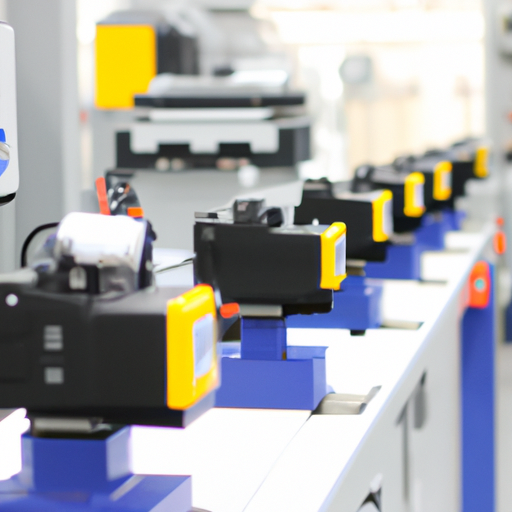

Programmable timers have become an essential component in various industries, from manufacturing to home automation. These devices allow users to schedule and control the operation of electrical appliances, lighting systems, and other equipment with precision and efficiency. As technology continues to advance, the manufacturing processes for programmable timers have also evolved to meet the growing demand for more sophisticated and reliable products.

Another key manufacturing process for programmable timers is the use of advanced microcontrollers and integrated circuits (ICs). These components serve as the brains of the timer, controlling its operation and providing the necessary processing power for advanced features such as wireless connectivity, touchscreen interfaces, and multi-channel programming capabilities. By leveraging the latest microcontroller and IC technologies, manufacturers can create programmable timers that offer enhanced functionality and performance while reducing power consumption and overall costs.
In addition to SMT and advanced microcontrollers, manufacturers are also incorporating automated testing and quality control processes into their production lines. Automated testing equipment allows for the rapid and accurate verification of each programmable timer's functionality, ensuring that it meets the required specifications and performance standards. This helps to minimize defects and improve overall product reliability, leading to higher customer satisfaction and lower warranty returns.
Furthermore, manufacturers are increasingly adopting lean manufacturing principles to streamline their production processes and reduce waste. By optimizing workflows, eliminating unnecessary steps, and implementing just-in-time inventory management, manufacturers can improve efficiency, reduce lead times, and lower production costs. This allows them to respond more quickly to changing market demands and deliver high-quality programmable timers to customers in a timely manner.
Another emerging trend in programmable timer manufacturing is the integration of Internet of Things (IoT) technology. By adding connectivity features such as Wi-Fi, Bluetooth, or Zigbee to programmable timers, manufacturers can enable remote monitoring and control capabilities, as well as seamless integration with smart home systems and other IoT devices. This opens up new opportunities for automation, energy management, and data analytics, providing users with greater convenience and control over their connected devices.
Overall, the latest manufacturing processes for programmable timers are focused on delivering higher performance, reliability, and functionality while reducing production costs and lead times. By leveraging advanced technologies such as SMT, microcontrollers, automated testing, and IoT connectivity, manufacturers can create innovative and competitive products that meet the evolving needs of the market. As the demand for programmable timers continues to grow, manufacturers will need to stay at the forefront of these trends to remain competitive and drive further innovation in the industry.
Programmable timers have become an essential component in various industries, from manufacturing to home automation. These devices allow users to schedule and control the operation of electrical appliances, lighting systems, and other equipment with precision and efficiency. As technology continues to advance, the manufacturing processes for programmable timers have also evolved to meet the growing demand for more sophisticated and reliable products.

Another key manufacturing process for programmable timers is the use of advanced microcontrollers and integrated circuits (ICs). These components serve as the brains of the timer, controlling its operation and providing the necessary processing power for advanced features such as wireless connectivity, touchscreen interfaces, and multi-channel programming capabilities. By leveraging the latest microcontroller and IC technologies, manufacturers can create programmable timers that offer enhanced functionality and performance while reducing power consumption and overall costs.
In addition to SMT and advanced microcontrollers, manufacturers are also incorporating automated testing and quality control processes into their production lines. Automated testing equipment allows for the rapid and accurate verification of each programmable timer's functionality, ensuring that it meets the required specifications and performance standards. This helps to minimize defects and improve overall product reliability, leading to higher customer satisfaction and lower warranty returns.
Furthermore, manufacturers are increasingly adopting lean manufacturing principles to streamline their production processes and reduce waste. By optimizing workflows, eliminating unnecessary steps, and implementing just-in-time inventory management, manufacturers can improve efficiency, reduce lead times, and lower production costs. This allows them to respond more quickly to changing market demands and deliver high-quality programmable timers to customers in a timely manner.
Another emerging trend in programmable timer manufacturing is the integration of Internet of Things (IoT) technology. By adding connectivity features such as Wi-Fi, Bluetooth, or Zigbee to programmable timers, manufacturers can enable remote monitoring and control capabilities, as well as seamless integration with smart home systems and other IoT devices. This opens up new opportunities for automation, energy management, and data analytics, providing users with greater convenience and control over their connected devices.
Overall, the latest manufacturing processes for programmable timers are focused on delivering higher performance, reliability, and functionality while reducing production costs and lead times. By leveraging advanced technologies such as SMT, microcontrollers, automated testing, and IoT connectivity, manufacturers can create innovative and competitive products that meet the evolving needs of the market. As the demand for programmable timers continues to grow, manufacturers will need to stay at the forefront of these trends to remain competitive and drive further innovation in the industry.